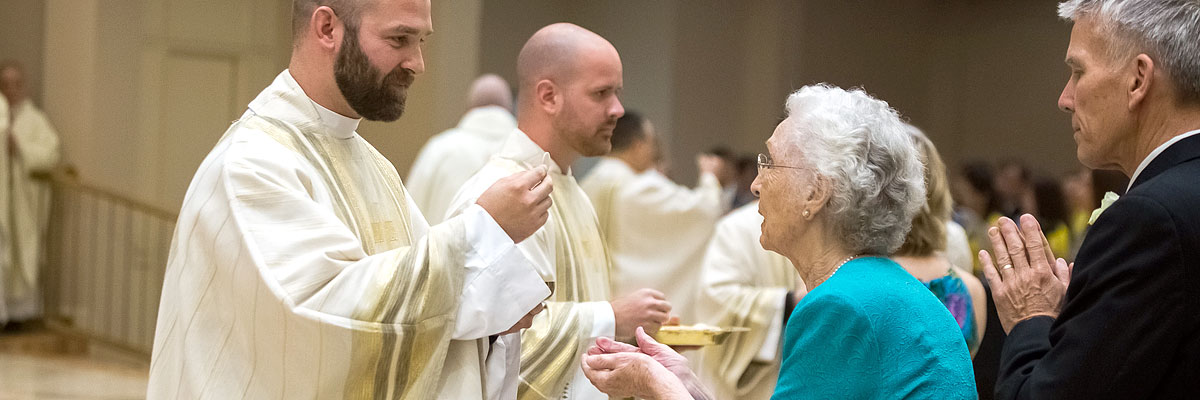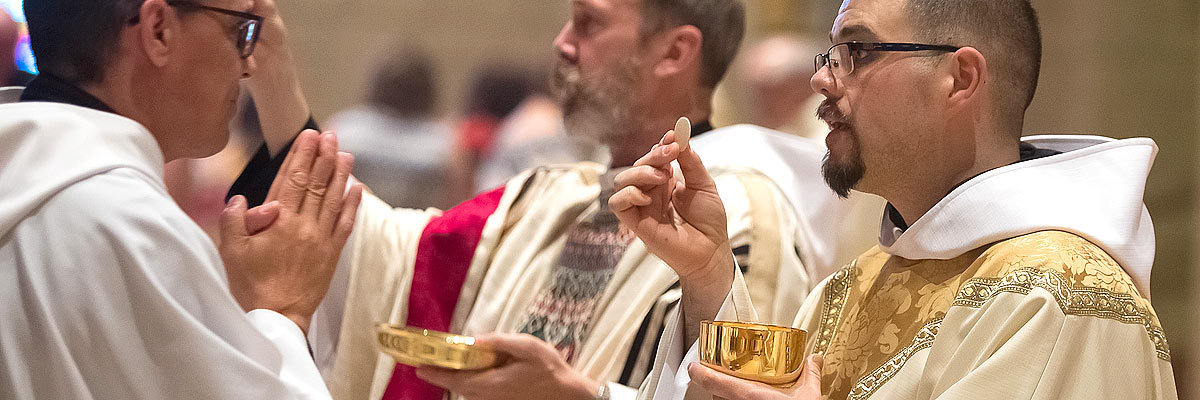Official Website of the
Catholic Diocese of Little Rock
The Eucharist, the original Thanksgiving, is the eternal gift from God
Published: November 17, 2007
By Sister Cabrini Schmitz, OSB
Table of plenty! Table of hospitality! Next Thursday Americans all over the world will gather somewhere to celebrate Thanksgiving Day. Family and friends will travel miles to sit around tables rich with choice festive foods.
The first Thanksgiving table of plenty and table of hospitality occurred in 1621 when the Plymouth settlers celebrated their very first rich harvest together with Native American friends, their co-workers and teachers in cultivating the land.
From different cultures, they came together to share the fruits of their combined efforts with words of praise to acknowledge their gratitude to God.
A more ancient and remarkable table of plenty and table of hospitality has been available to Catholic Christians for two millennia. This table is the eucharistic table, “the source and summit of the Christian life.” (Lumen Gentium, 11). At this table all are guests of the divinity as they express their rich cultural diversity.
As long as history has been recorded there has been evidence of the longing of the human heart to have a connection with the divine and to sing a song of thanksgiving. That deep desire is succinctly expressed in Psalm 116:12-19 of the New American Bible.
The psalmist cries out, “How can I repay the Lord for all the good done for me? I will raise the cup of salvation and call on the name of the Lord. I will pay my vows to the Lord in the presence of all his people. I will offer a sacrifice of thanksgiving and call on the name of the Lord. I will pay my vows to the Lord in the presence of all his people, in the courts of the house of the Lord, in your midst, O Jerusalem. Hallelujah!”
Among Catholic Christians, the answer to the psalmist’s questions is the Eucharist, the sacrament that is so rich that many titles are needed to describe it. The Catechism of the Catholic Church lists these titles: first is the Eucharist, the Greek word meaning “thanksgiving,” then the Lord’s Supper, the Breaking of Bread, the eucharistic assembly, the memorial of the Lord’s passion and resurrection, the holy sacrifice of the Mass, the holy and Divine Liturgy, holy Communion, holy Mass and wedding feast.
Feasting at this banquet, however, puts certain demands on those attending. For Jesus said in Matthew 7:21-23, “Not everyone who says to me, ‘Lord, Lord,’ will enter the reign of heaven, but only the one who does the will of my God in heaven. Many will say to me on that day, ‘Lord, Lord, did we not prophesy in your name? Did we not drive out demons in your name? Did we not do mighty deeds in your name?’ Then I will declare to them solemnly, ‘I never knew you. Depart from me you evildoers.’”
In Jesus’ parables it is incumbent on each guest to wear the proper ‘wedding garment’ to the banquet. How does a Catholic or Christian know what the ‘wedding garment’ looks like? The welcome guest must have a record of good deeds, the corporal works of mercy, “ ... for I was hungry, thirsty, a stranger, naked, sick, in prison and you ministered to me.” (Matthew 5:35-36) The welcome guests must see Christ in the other in all the rich diversity of the human family.
The Sunday after Thanksgiving is the feast of Christ the King, the one who continuously unites humanity with divinity and one human with another.
Sister Cabrini Schmitz, OSB, is prioress of St. Scholastica Monastery in Fort Smith.






